Business
How big things could get done—even in Canada
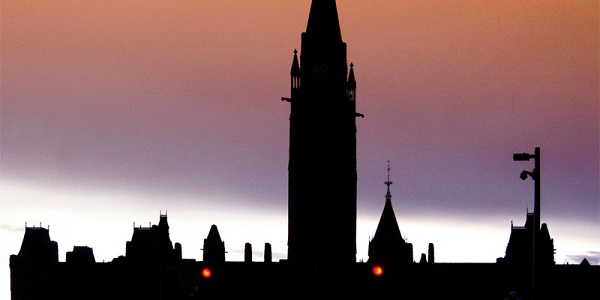
From the Fraser Institute
By Philip Cross
From Newfoundland’s Muskrat Falls hydro project, to Ottawa’s Firearms Registry and the Phoenix pay system, to Montreal’s 1976 Olympics, Canada is a gold medal winner when it comes to wasting tax payer dollars. It doesn’t have to be this way.
Last year, Bent Flyvbjerg, a Danish professor of economic geography specializing in megaprojects, and Canadian journalist Dan Gardner co-authored a book How Big Things Get Done. They investigate what they coin the “Iron Law of Megaprojects,” which holds they routinely come in well over budget, far past projected deadlines, and without the projected benefits.
Unfortunately for taxpayers, the book contains numerous examples of Canadian megaprojects that follow this Law of Megaprojects. The federal government’s infamous firearms registry is a textbook template for how IT projects can go terribly wrong, ending up 590 per cent over budget. The Muskrat Falls hydro project in Newfoundland is cited as a classic demonstration of what happens when hiring a firm with little direct experience managing such a large complex project. Most famously, the 1976 Montreal Olympic Games wins the title for the largest cost overrun in Olympic history, finishing 720 per cent over budget. The authors suggest Montreal’s “Big Owe” stadium “should be considered the unofficial mascot of the modern Olympic Games.”
One thing all these Canadian examples have in common is extensive government involvement. Not that governments learned from their past mistakes. The federal government’s Phoenix pay system fiasco demonstrates that IT remains a black hole, with the government recently announcing it would abandon Phoenix after spending $3.5 billion trying to implement it. Several light train projects across the country have gone off the rails, the poster boy being the system in Ottawa, which is years behind schedule and already $2.5 billion over budget.
There are several reasons why government projects are chronically prone to failure. One is that politicians, especially late in their careers, want legacies in the form of monumental tangible projects irrespective of whether they effectively meet a public need. You can see this dynamic clearly at work today in Canada, as the Trudeau government pushes for a prohibitively expensive (probably more than $100 billion) high-speed rail connection between Windsor and Quebec City. Meanwhile, Ontario Premier Doug Ford promotes a traffic tunnel underneath Highway 401 between Brampton and Scarborough, and Quebec Premier Francois Legault revives plans for a third link connecting Quebec City to the south shore of the St. Lawrence River. While Canada clearly needs more transportation infrastructure, these projects are not the most cost-effective way of meeting the needs of commuters.
Governments deceptively deploy several tricks to help get uneconomic projects built. They routinely produce unrealistically low-cost estimates to make wasteful ego-driven projects appear affordable. Another tried and true tactic is to just “start digging a hole and make it so big, there’s no alternative to coming up with the money to fill it in,” as former San Francisco mayor Willie Brown admitted. This approach preys on the mistaken belief that large sunk costs mean scrapping a project “would be interpreted by the public as ‘throwing away’ the billions of dollars already spent” when it is actually a textbook example of throwing good money after bad.
Unlike other studies of how major infrastructure projects typically are over budget, Flyvbjerg and Gardner have some concrete recommendations on how to manage large projects that respect deadlines and budgets.
These steps include careful consideration of the actual goals of the project (airlines can meet the need for fast transport in the Windsor-Quebec corridor without the expense of high-speed rail), detailed planning and preparation followed by swift execution to minimize costly surprises (summarized by their advice to “think slow, act fast”), accounting for the cost of similar projects in the past, and breaking large projects into smaller modules to allow projects to scale back when they run into trouble. A good example of these principles at work in Canada were several oilsands projects built before 2015, when severe shortages were addressed by firms using modularity and synchronizing their work schedules to free up scarce labour and materials.
However, one major flaw in Flyvbjerg and Gardner’s analysis is their failure to understand the economics of renewable energy. They cite solar and wind projects as examples of projects that routinely finish under budget, a major factor in their declining cost. But building renewable energy is not their only cost to the energy grid, as back-up plants must be maintained for those periods when the sun is not shining or the wind is not blowing, as noted in a recent article by Bjorn Lomborg. The expense of maintaining plants that often are idle raises overall costs. This is why jurisdictions that rely extensively on renewable energy, such as Germany and California, have high energy costs that must be paid either by customers or taxpayers.
However, apart from this mistake, there is much governments and taxpayers can learn from How Big Things Get Done.
Author:
Business
Trump confirms 35% tariff on Canada, warns more could come
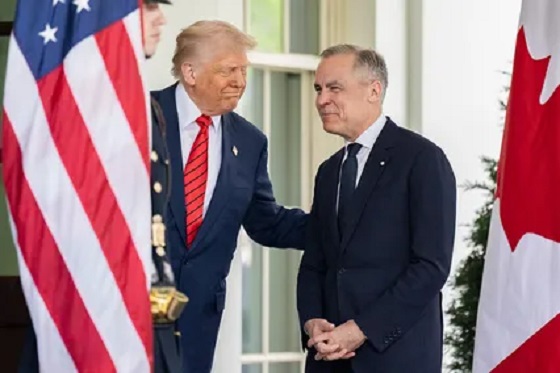
Quick Hit:
President Trump on Thursday confirmed a sweeping new 35% tariff on Canadian imports starting August 1, citing Canada’s failure to curb fentanyl trafficking and retaliatory trade actions.
Key Details:
- In a letter to Canadian Prime Minister Mark Carney, Trump said the new 35% levy is in response to Canada’s “financial retaliation” and its inability to stop fentanyl from reaching the U.S.
- Trump emphasized that Canadian businesses that relocate manufacturing to the U.S. will be exempt and promised expedited approvals for such moves.
- The administration has already notified 23 countries of impending tariffs following the expiration of a 90-day negotiation window under Trump’s “Liberation Day” trade policy.
Diving Deeper:
President Trump escalated his tariff strategy on Thursday, formally announcing a 35% duty on all Canadian imports effective August 1. The move follows what Trump described as a breakdown in trade cooperation and a failure by Canada to address its role in the U.S. fentanyl crisis.
“It is a Great Honor for me to send you this letter in that it demonstrates the strength and commitment of our Trading Relationship,” Trump wrote to Prime Minister Mark Carney. He added that the tariff response comes after Canada “financially retaliated” against the U.S. rather than working to resolve the flow of fentanyl across the northern border.
Trump’s letter made clear the tariff will apply broadly, separate from any existing sector-specific levies, and included a warning that “goods transshipped to evade this higher Tariff will be subject to that higher Tariff.” The president also hinted that further retaliation from Canada could push rates even higher.
However, Trump left the door open for possible revisions. “If Canada works with me to stop the flow of Fentanyl, we will, perhaps, consider an adjustment to this letter,” he said, adding that tariffs “may be modified, upward or downward, depending on our relationship.”
Canadian companies that move operations to the U.S. would be exempt, Trump said, noting his administration “will do everything possible to get approvals quickly, professionally, and routinely — In other words, in a matter of weeks.”
The U.S. traded over $762 billion in goods with Canada in 2024, with a trade deficit of $63.3 billion, a figure Trump called a “major threat” to both the economy and national security.
Speaking with NBC News on Thursday, Trump suggested even broader tariff hikes are coming, floating the idea of a 15% or 20% blanket rate on all imports. “We’re just going to say all of the remaining countries are going to pay,” he told Meet the Press moderator Kristen Welker, adding that “the tariffs have been very well-received” and noting that the stock market had hit new highs that day.
The Canadian announcement is part of a broader global tariff rollout. In recent days, Trump has notified at least 23 countries of new levies and revealed a separate 50% tariff on copper imports.
“Not everybody has to get a letter,” Trump said when asked if other leaders would be formally notified. “You know that. We’re just setting our tariffs.”
Business
Trump slaps Brazil with tariffs over social media censorship
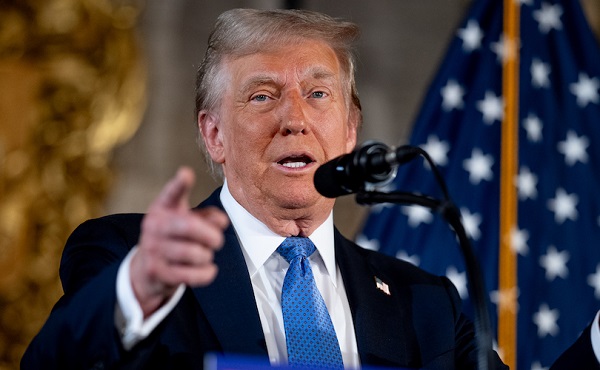
From LifeSiteNews
By Dan Frieth
In his letter dated July 9, 2025, addressed to President Luiz Inácio Lula da Silva, Trump ties new U.S. trade measures directly to Brazilian censorship.
U.S. President Donald Trump has launched a fierce rebuke of Brazil’s moves to silence American-run social media platforms, particularly Rumble and X.
In his letter dated July 9, 2025, addressed to President Luiz Inácio Lula da Silva, Trump ties new U.S. trade measures directly to Brazilian censorship.
He calls attention to “SECRET and UNLAWFUL Censorship Orders to U.S. Social Media platforms,” pointing out that Brazil’s Supreme Court has been “threatening them with Millions of Dollars in Fines and Eviction from the Brazilian Social Media market.”


Trump warns that these actions are “due in part to Brazil’s insidious attacks on Free Elections, and the fundamental Free Speech Rights of Americans,” and states: “starting on August 1, 2025, we will charge Brazil a Tariff of 50% on any and all Brazilian products sent into the United States, separate from all Sectoral Tariffs.” He also adds that “Goods transshipped to evade this 50% Tariff will be subject to that higher Tariff.”
Brazil’s crackdown has targeted Rumble after it refused to comply with orders to block the account of Allan dos Santos, a Brazilian streamer living in the United States.
On February 21, 2025, Justice Alexandre de Moraes ordered Rumble’s suspension for non‑compliance, saying it failed “to comply with court orders.”
Earlier, from August to October 2024, Moraes had similarly ordered a nationwide block on X.
The court directed ISPs to suspend access and imposed fines after the platform refused to designate a legal representative and remove certain accounts.
Elon Musk responded: “Free speech is the bedrock of democracy and an unelected pseudo‑judge in Brazil is destroying it for political purposes.”
By linking censorship actions, particularly those targeting Rumble and X, to U.S. trade policy, Trump’s letter asserts that Brazil’s judiciary has moved into the arena of foreign policy and economic consequences.
The tariffs, he makes clear, are meant, at least in part, as a response to Brazil’s suppression of American free speech.
Trump’s decision to impose tariffs on Brazil for censoring American platforms may also serve as a clear signal to the European Union, which is advancing similar regulatory efforts under the guise of “disinformation” and “online safety.”
With the EU’s Digital Services Act and proposed “hate speech” legislation expanding government authority over content moderation, American companies face mounting pressure to comply with vague and sweeping takedown demands.
By framing censorship as a violation of U.S. free speech rights and linking it to trade consequences, Trump is effectively warning that any foreign attempt to suppress American voices or platforms could trigger similar economic retaliation.
Reprinted with permission from Reclaim The Net.
-

 Also Interesting1 day ago
Also Interesting1 day ago9 Things You Should Know About PK/PD in Drug Research
-
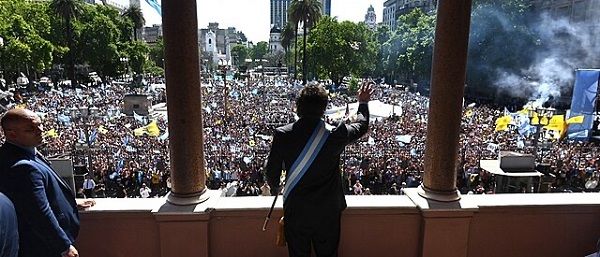
 Business2 days ago
Business2 days ago‘Experts’ Warned Free Markets Would Ruin Argentina — Looks Like They Were Dead Wrong
-

 Business1 day ago
Business1 day agoCannabis Legalization Is Starting to Look Like a Really Dumb Idea
-
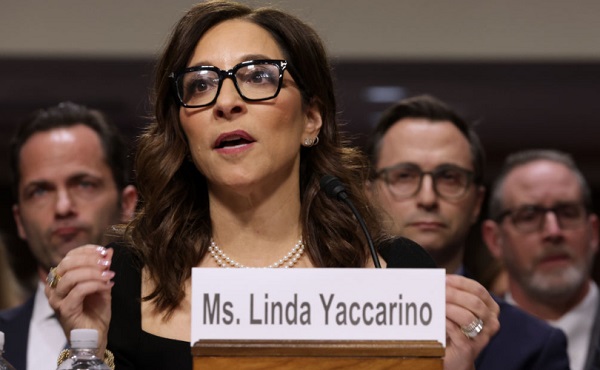
 Business2 days ago
Business2 days agoWEF-linked Linda Yaccarino to step down as CEO of X
-
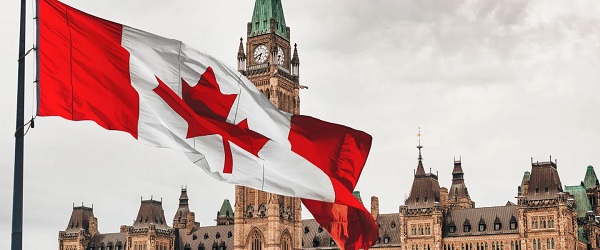
 Business1 day ago
Business1 day agoCarney government should recognize that private sector drives Canada’s economy
-

 Bruce Dowbiggin1 day ago
Bruce Dowbiggin1 day agoThe Covid 19 Disaster: When Do We Get The Apologies?
-

 Automotive2 days ago
Automotive2 days agoAmerica’s EV Industry Must Now Compete On A Level Playing Field
-

 Media1 day ago
Media1 day agoCBC journalist quits, accuses outlet of anti-Conservative bias and censorship






